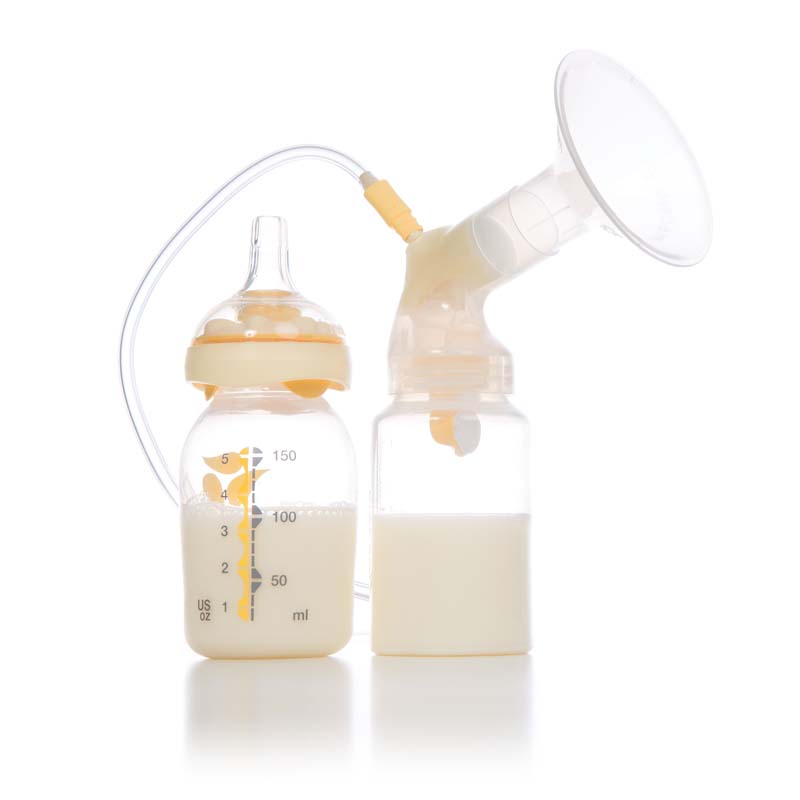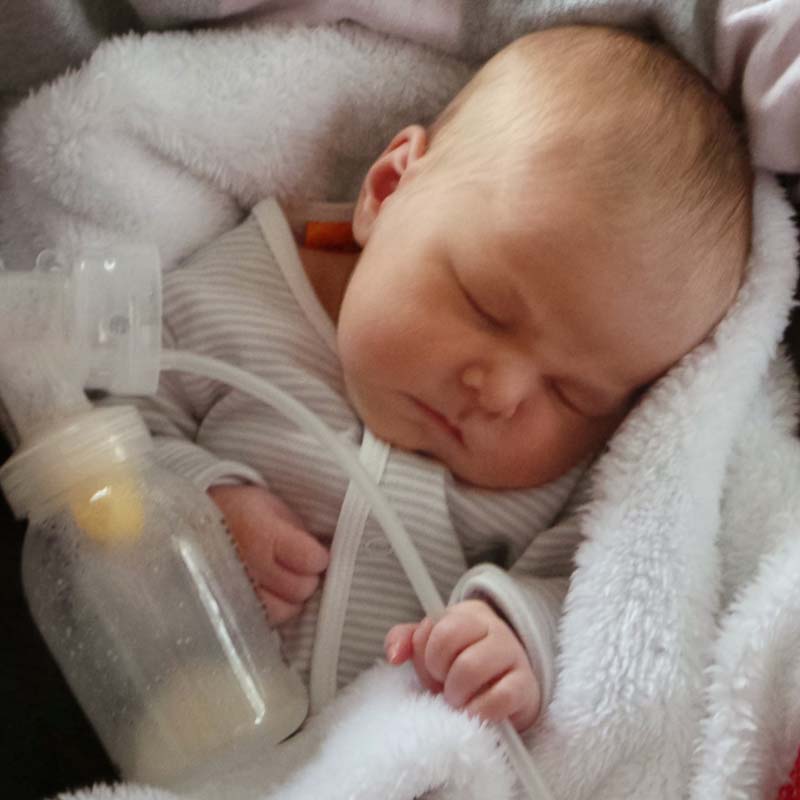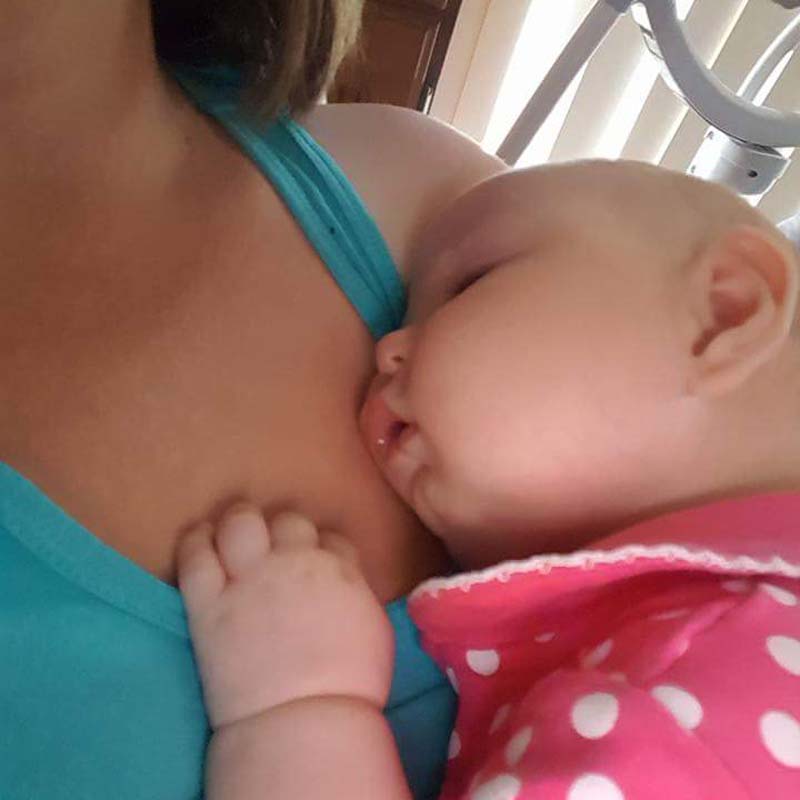By Yvette O’Dowd
Breastfeeding isn’t always easy. In fact, most parents experience challenges in establishing breastfeeding and some struggle maintaining it.
Many breastfeeding advocates play down the difficulties as they fear putting people off trying. Which might be true for some people, but most parents want to breastfeed their baby.
It’s not really breastfeeding which is overwhelming, but the environment women learn this natural technique in. Without the support of experienced role models in their family they rely on midwives, child health nurses, lactation consultants and breastfeeding counsellors to guide them. And dedicated as these all are, none can be with the mother and baby 24/7. That role often falls to a partner, friend or family member who likely has less knowledge of how breastfeeding works.
Society’s expectations of breastfeeding mothers can be unrealistic. Discharged from hospital with little experience of putting their baby to their breast, often on a regime of pumping and topping up with formula, mothers are set up for failure. Delays in support, waiting lists and financial barriers in accessing IBCLC lactation consultants and general worries about milk supply, attachment and infant sleep lead to many parents ending breastfeeding.
When you understand how breasts make milk and how babies work with the breast to maintain milk supply, you can work with your breasts and baby to maximise milk production.
Responsive feeding.
Back in the day, we had to tell the midwives in hospital that we wanted to ‘Demand Feed’. Otherwise, they would presume our babies were on a feeding schedule: three hourly feeds until a certain weight, then 4 hourly feeds.
Demand in this context was later reframed as ‘Feeding According to Need’. Demand came with some negative connotations and put too much responsibility onto babies who might be too sleepy to demand very much at all!
Later again we talked about ‘Cue-based Feeding’ which is now also referred to as ‘Responsive Feeding’. Which is what was being talked about all along; it just took several decades to get the language right!
Mothers and their breasts respond to behaviour in the baby signalling that they need to breastfeed. Generally, this signalling begins as they come to the end of a sleep cycle and are in a light sleep stage.
Presuming baby is in the natural state against their mother’s upper body, they will begin to “nuzzle” and seek the nipple. If it is right by their mouth, they can attach quickly and often without audible sound. This is most likely when they are being held skin to skin or breastsleeping alongside the maternal body.
The more distance between mouth and breast, the more effort required to find it. Initially the head will make small sweeping movements, expecting to brush against the nipple. The hands will become active, and the baby might suck on them during the search. As they continue seeking the nipple, the head movements will cover a wider area and they might even twist or turn the body. The mouth will open and close in gaping motions and sucking on the hands increase in intensity.
As the baby begins to sense the breast is not where it should be, they will move from soft cooing noises to louder grunts and sounds before crying begins. Keeping baby close means they can go to the breast before the crying stage.
Cluster Feeding: Normal, Natural and Hard Work.
Ah, it’s that time of day!
That time when your baby latches on to the boob around sunset and only comes off to swap sides … again. Quick nappy change and … back on the boob. Into the baby carrier and … boob. More boob while you prep dinner, more while you eat dinner. Boob in front of the TV … boob in bed while you scroll on your phone. Asleep! Ninja roll out from beside them to dash to the loo and … okay, more boob!
And this is entirely normal!
Is it lots of feeds or one never-ending one? … Does it matter?
In the days before electric or even gas or oil lamps, when candles were expensive, and bed was warmer anyway … snuggling up with your baby in the first few hours of night must have been quite nice. Then a few solid hours sleep before a few more feeds overnight and then up with the dawn.
Our babies aren’t broken. Our society and lifestyles are! If you are up too late at night because you want some adult time (Netflix and Instagram!), need to prepare for the workday ahead, or catch up on housework … you are going to find the evening cluster feeding frustrating. If you have other children, a partner who isn’t supportive, or you are juggling work and study with parenting – this will be hard.
But your baby is behaving typically. Frequently removing milk works with your fluctuating hormones which peak in the early hours of the morning but dip naturally in the late afternoon and early evening.
The breastfeeding season is intense. It is hard to get the balance right with modern lives. But adults can adapt and change; babies and toddlers cannot.
Breast storage and feed frequency.
Breastfeeding works by supply and demand: take milk out, make more milk. Leave milk in, make less milk. This feedback loop between baby and breasts works around the clock, reliably keeping production running.
But there is another factor at play which you might not be aware of. It explains why breastfeeding frequency can vary so much between mothers.
We are all unique.
And this uniqueness includes what goes on inside our breasts. While we focus a lot on the size, shape, and appearance of breasts we really don’t think about how they function. Breasts produce and store breastmilk. But while the amount we produce gets all the attention during breastfeeding the amount we can store is rarely discussed. And the variation between individuals is dramatic.
When your storage space is compact … say you have a tiny pantry in your kitchen, you need to shop little and often. But if you have extensive pantry with ample room, you can shop in bulk and do so less often. You still consume the same amount of food each day, but your shopping habits are different because of your storage availability.
This is how it works with breastfeeding. If your milk storage space within the breast is compact, your baby shops (feeds) little and often and your breasts restock frequently. But if you have extensive storage capacity, your baby can shop (feed) less often, and your breasts restock less often.
This is not related to breast size but how they work. A very small breast might have huge storage capacity and a large one very little. Or the opposite. Babies simply feed as often as they need to meet their needs around the clock. It works perfectly – unless interfered with by clocks, schedules, charts and measurements.
Feed frequently to make milk.
There are times when it’s just not worth moving the boob away from the baby. Periods of increased breastfeeding signal to the breast to increase production because the infant has some big stuff going on. You literally need to go with the flow.
You can invest a lot of thinking into the ‘Why’ of the increased feeding but looking at it as a problem to be solved is considering it from entirely the wrong perspective. Because you are observing a problem being solved.
Breastfeeding is not really something you do to your child. It is something the baby does with the breast. Your thinking brain just gets in the way. Babies only need us to facilitate access to the boob.
Our society has damaged breastfeeding knowledge so badly that we live in anticipation of it failing. We look for signs it is not working and view nearly all behaviour as indicators of breastfeeding going wrong. We don’t trust our breasts and we don’t trust our babies.
Breastfeeding has had some bad PR since formula marketing began. The advertising industry knows exactly which buttons to press and anxiety about supply is top of the list for breastfeeding parents. Lack of confidence is much more common than lack of milk. But one of the major causes of low supply is lack of breastfeeding!
The goal of maximising the time between breastfeeds is the biggest barrier to milk production. Offering the breast first is the best course of action, whatever may have woken or disturbed the baby in the first place. It doesn’t matter what the problem is when you have a universal solution always available. You can expect a typical day to include 8-12 breastfeeds and periods of increased growth and development will mean increased frequency and duration of time at the breast.
Breastfeed as often as they take it and you will make enough, they will take enough, and you can trust it. Just as human mothers have for millennia.
Yvette O’Dowd is not your typical grandmother! This mother of three and ‘Granny’ of three has been a breastfeeding counsellor since 1992. In 2014, Yvette established the Southern Natural Parenting Network, incorporating South Eastern Babywearing Group. With 11,000 members world-wide, the group supports parents interested in breastfeeding, babywearing, co-sleeping, baby-led weaning and modern cloth nappies and other aspects of gentle, natural parenting. www.facebook.com/SouthernNaturalParentingNetwork





